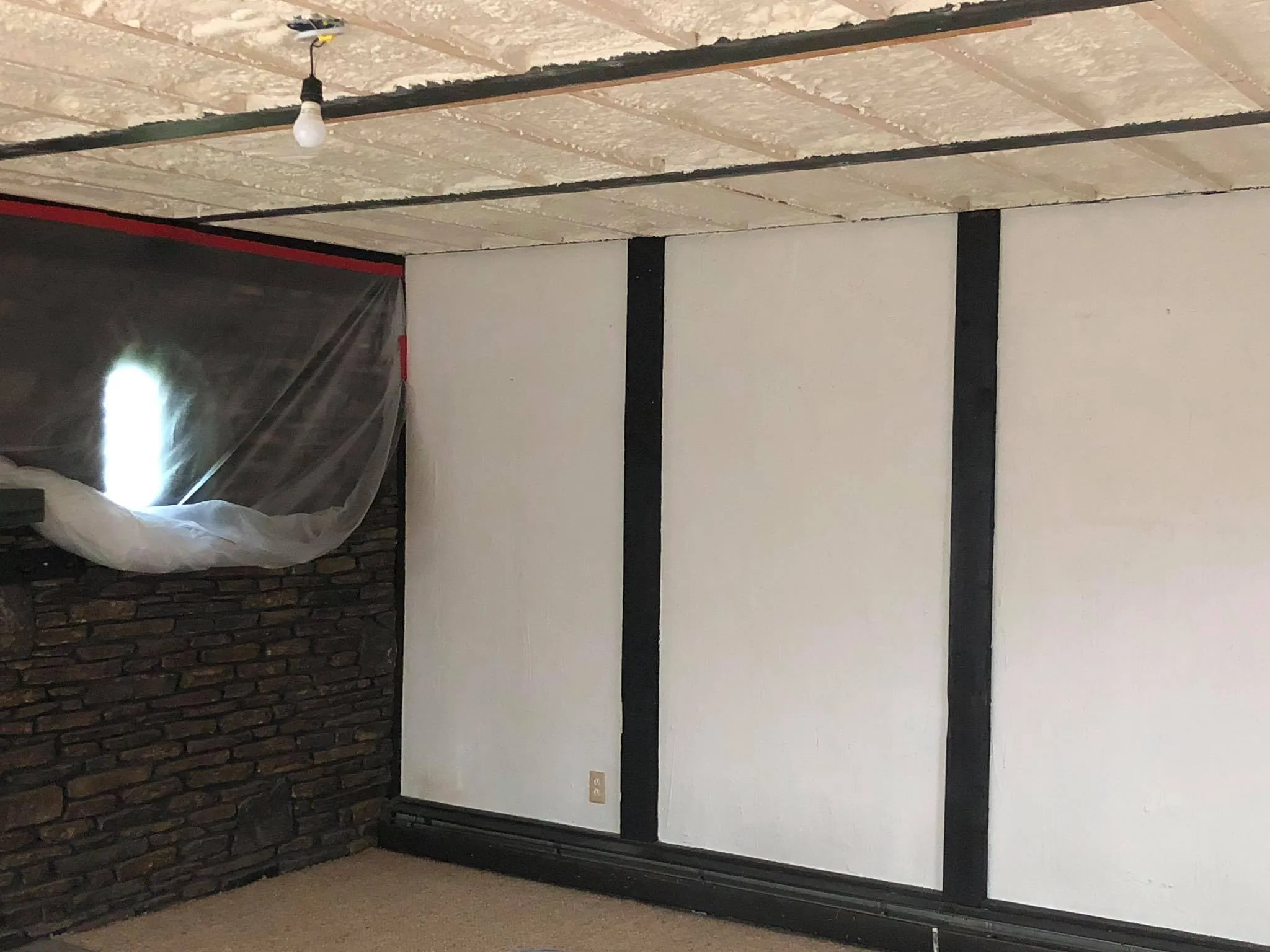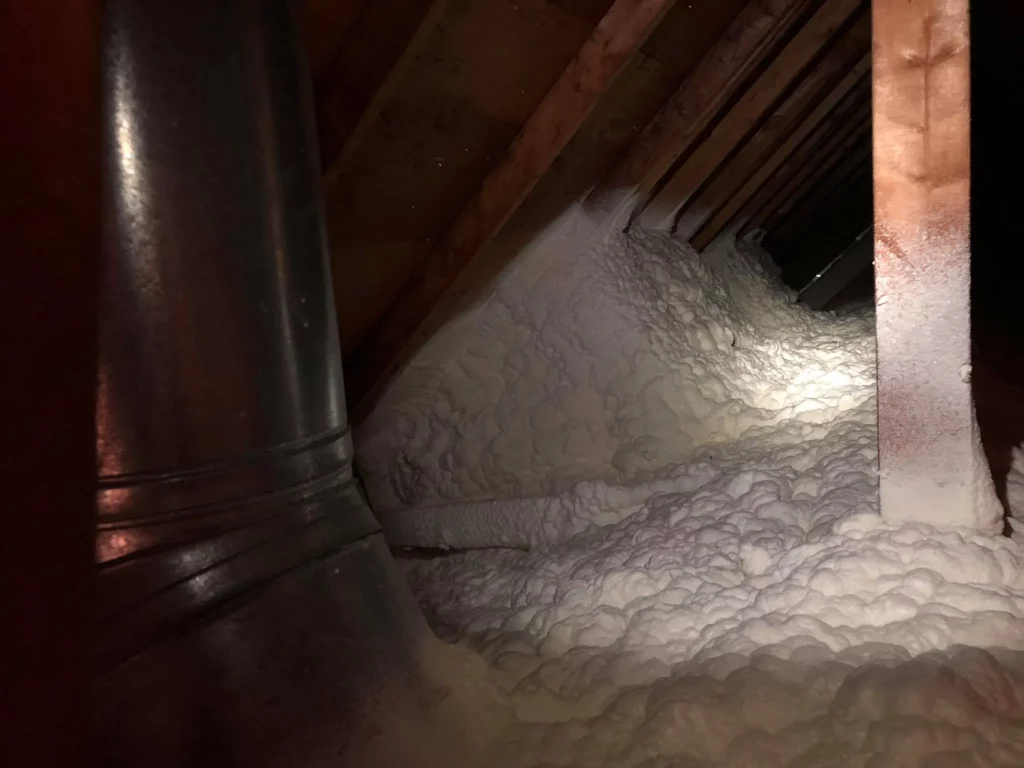
Proper insulation in Clinton, MA directly protects your property from high utility bills by creating a thermal barrier that slows the movement of heat. In a Clinton, MA home, this means keeping warm air inside during the cold winters and blocking excess heat from entering during hot, humid summers. When heat transfer is reduced, your heating and cooling systems don’t have to work as hard or run as long to maintain a comfortable temperature. This translates directly into lower energy consumption and more predictable, manageable utility costs year-round.
This article breaks down how insulation functions, the best types for New England homes, and what to consider before making an upgrade. The information is based on years of hands-on experience helping homeowners in the local area manage their energy efficiency.
Heat naturally moves from warmer areas to cooler areas, and it does so in three primary ways: conduction, convection, and radiation. Your energy bills are a direct reflection of how much your HVAC system has to fight this natural process.
Insulation materials are designed to specifically counter these forms of heat transfer. Their effectiveness is measured by an R-value, which indicates the material’s resistance to heat flow. The higher the R-value, the better the insulation’s performance.
Not all insulation is created equal, and the right choice depends on the application, budget, and specific needs of your home. Homes in this region often benefit from materials that can handle moisture and fit into the tight spaces of older construction.
This is one of the most common types of insulation, often seen in large pink or yellow rolls (batts). It’s made of fine glass fibers and works by trapping pockets of air. Fiberglass is a cost-effective choice for unfinished walls, floors, and attics. However, it must be installed carefully, as compressing it reduces its R-value, and it can lose effectiveness if it gets wet.
Cellulose is made primarily from recycled paper products treated with a fire retardant. It’s typically installed using a blowing machine, which makes it excellent for adding insulation to existing finished walls or attics without major demolition. It fills irregular spaces well, leaving fewer gaps than batts might.
Spray foam is a liquid insulation that expands into a solid foam, filling every crack and crevice to create a powerful air seal.
Bonus Tip: In older homes with fieldstone foundations, closed-cell spray foam can be particularly effective. It adheres directly to the uneven stone surface, preventing air leaks and stopping moisture from seeping into the basement.
| Feature | Fiberglass Batts | Blown-In Cellulose | Closed-Cell Spray Foam |
|---|---|---|---|
| Typical R-Value | R-3.1 to R-3.4 per inch | R-3.2 to R-3.8 per inch | R-6.0 to R-7.0 per inch |
| Air Sealing | No | Good | Excellent |
| Moisture Control | Poor (can hold moisture) | Good (can manage moisture) | Excellent (acts as a vapor barrier) |
| Best For | Open walls, attics, new construction | Existing walls, attics, dense packing | Basements, rim joists, areas needing an air/moisture seal |
Before you can fix a problem, you need to know where it is. In most New England homes, a few key areas are responsible for the majority of energy loss. According to the U.S. Department of Energy, focusing on the top and bottom of your house, the attic and the foundation, can make a huge difference.
Upgrading your insulation services in Clinton, MA is more than just picking a material. A few factors should be reviewed to ensure the project is effective and provides a good return on your investment.
Before you start, it’s a good idea to understand your home’s specific weaknesses. A professional energy audit can use tools like blower doors and infrared cameras to pinpoint the exact locations of air leaks and insulation gaps. This takes the guesswork out of the process.
Insulation is not a substitute for air sealing. It’s like putting on a winter coat but leaving it unzipped. Small cracks and gaps around windows, plumbing pipes, and electrical wiring should be sealed with caulk or expanding foam before adding insulation. This combination of air sealing and insulation is what truly lowers energy bills.
The state of Massachusetts offers programs to help homeowners improve their energy efficiency. A program sponsored by Mass Save provides rebates and incentives for insulation and air sealing projects. Information provided by Mass Save shows these can significantly reduce the upfront cost of an insulation upgrade.
Bonus Tip: When insulating an attic, don’t forget about ventilation. Proper attic ventilation helps regulate temperature and moisture, protecting your roof structure and preventing insulation from becoming damp and ineffective.

A quick look in your attic is a good start. If you can easily see the tops of your ceiling joists, you probably need more insulation. Other signs include high energy bills, rooms that are difficult to keep warm or cool, and cold drafts.
The return varies, but it’s consistently one of the best home improvement projects for ROI. A report from Remodeling Magazine often places attic insulation projects among the highest-recouping renovations, with homeowners often recovering a large percentage of the cost at resale. More importantly, you start saving on energy bills from day one.
Yes, absolutely. Insulation, especially dense-pack cellulose and spray foam, is very effective at dampening sound from outside and between rooms. It’s an added benefit that many people appreciate.
In many cases, yes. As long as the existing insulation is dry and not moldy, new insulation (usually blown-in cellulose or fiberglass) can be added on top to reach the recommended R-value. Any damaged or contaminated insulation must be removed first.
Effectively insulating your property is a direct and reliable strategy to combat rising utility bills. By slowing heat transfer, you reduce the strain on your HVAC equipment and lower your overall energy use. For homeowners in Clinton, MA, focusing on the attic, basement, and walls can lead to a more comfortable home and significant long-term savings. Before starting, assess your home’s specific needs, consider air sealing, and look into available local incentives.
To learn more about our continued efforts to improve home energy efficiency across Massachusetts, read about Lamothe Spray Foam Insulation’s expansion of open-cell services.
For a detailed evaluation of your property’s specific insulation needs, a professional consultation can provide clarity. To understand how these principles apply to your home, contact Lamothe Spray Foam Insulation at (508) 847-0119. You can also send an email with your questions to [email protected] for a straightforward discussion about your options.